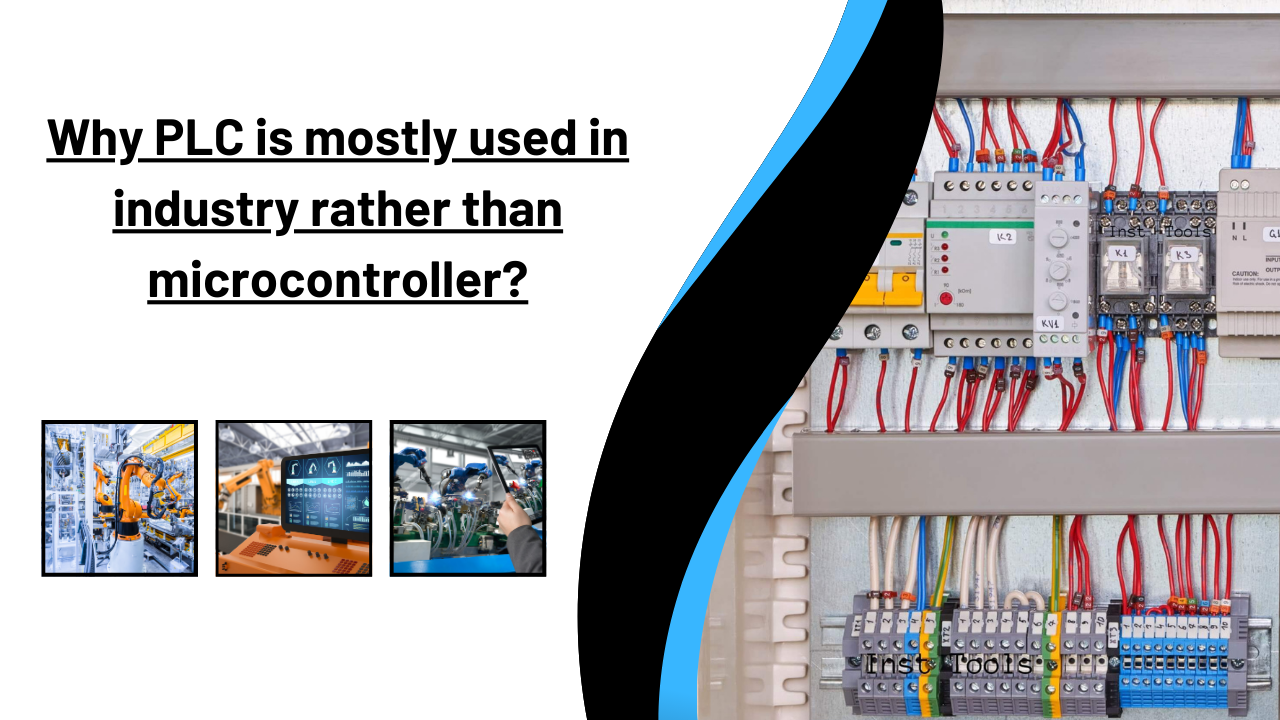In industrial applications, Programmable Logic Controllers (PLCs) are typically preferred over microcontrollers due to their ruggedness, reliability, and ability to handle complex automation tasks. PLCs are designed specifically for industrial environments, where they must operate reliably in conditions such as high temperatures, dust, and vibration.
Robustness and Reliability
Allen Bradley Programmable Logic Controllers (PLCs) are made to function dependably in challenging industrial settings. They offer increased resilience to electrical noise, temperature changes, vibration, and other environmental conditions because they are constructed with industrial-grade components. As a result, they are more suited for industrial automation, where dependability and toughness are essential.
- Industrial-Grade Components: Industrial-grade components that are made to resist the harsh circumstances of industrial environments are used to build PLCs. The selection of these components takes into account their robustness, resistance to electrical noise, temperature changes, vibration, and other environmental conditions.
- Rugged Enclosures: PLCs are kept in durable enclosures that guard them against physical harm, dust, moisture, and other outside factors. To guarantee the PLC’s dependability in varied industrial situations, the enclosures are normally constructed to adhere to strict industry standards for ingress protection (IP) ratings.
Scalability and Flexibility:
PLCs have modular structures that make scaling and extension simple. Without major changes, they can be expanded with extra input/output (I/O), communication, and other components as necessary. Due to their adaptability, PLCs are able to handle upcoming system expansions as well as changing automation requirements.
- Modular Design: PLCs have a modular architecture that enables users to add and remove components as required. They are made up of a base unit, which houses the central processing unit (CPU) and other necessary parts, and expansion modules, which add more input/output (I/O) features. Users may simply add extra I/O modules to accommodate new sensors, actuators, or control devices, making it simple to scale up thanks to the modular architecture.
- Expandable I/O Capacity: PLCs offer a variety of I/O modules, including specialist modules for specialised tasks, analogue inputs, analogue outputs, digital inputs, and digital outputs. These modules offer flexibility in adjusting to various application requirements because they can be added or removed without altering the PLC as a whole. Depending on the particular requirements of the automation system, the kind and number of I/O modules can be altered.
Industrial Standards and Interoperability:
PLCs are built to be compatible with other industrial machinery and systems and to adhere to industry-specific norms and regulations. They enable integration with diverse devices and control networks by supporting industry-standard communication protocols.
- Communication Protocols: PLCs accept several standardised industrial automation communication protocols, including Modbus, Profibus, EtherNet/IP, DeviceNet, and Profinet. In order to ensure compatibility and smooth communication, these protocols provide the guidelines and formats for data exchange between PLCs and other devices.
- IEC 61131-3 Standard: The IEC 61131-3 standard serves as the foundation for PLC programming languages such ladder logic, function block diagrams, structured text, and instruction lists. This international standard establishes a uniform methodology for configuring industrial control systems, fostering compatibility between various PLC makes and models.
Allen Bradley Micro820 PLC Systems
Programming Environment:
PLCs feature specialised software tools and programming environments that are developed for industrial automation. For engineers and technicians with experience in industrial automation, these programming environments often employ graphical languages, such as ladder logic or function block diagrams, which are simpler to comprehend and implement. The learning curve for people without a strong programming experience may be higher for microcontrollers, which often require lower-level programming languages like C or assembly language.
Safety Features:
PLCs frequently include safety-related attributes and capabilities, including redundant systems, safety-certified parts, and integrated safety relays. In industrial settings where the security of people and machinery is crucial, these features are vital.
- Safety Input/Output (I/O) Modules: To handle safety-related signals separately from ordinary I/O signals, PLCs can be fitted with specialised safety I/O modules. These safety I/O modules are made to comply with strict safety requirements and offer improved safety functionality.
- Safety Certifications: PLCs could go through arduous certification and testing procedures to make sure they adhere to safety regulations. Functional safety standards like IEC 61508 and IEC 62061, which offer recommendations for the design, implementation, and operation of safety-related systems, can be certified for them.
- Integrated Safety Relays: Some PLCs have hardware that includes safety relay capability. Safety-related control features like emergency stop control, two-hand control, or safety door monitoring are provided by these safety relays. They have self-monitoring capabilities, redundant contacts, and are made to fulfil safety standards.
Diagnostics and Maintenance:
PLCs have built-in diagnostics and monitoring features that make it simple for operators and maintenance staff to locate defects, resolve problems, and carry out preventive maintenance. PLCs make maintenance and troubleshooting easier by logging data, monitoring I/O status, spotting defects, and generating alarms.
- Built-in Diagnostics: PLCs frequently have internal diagnostics built-in that enable system performance monitoring and analysis. They can monitor things like I/O status, programme execution, communication status, and indicators of internal health. PLCs can identify system defects, abnormalities, and errors by continuously monitoring these parameters.
- Alarm Generation: PLCs are able to provide alarms and notifications in response to predetermined circumstances or events. The PLC can activate alarms to notify operators or maintenance people when specific variables go beyond predetermined thresholds or when severe faults happen. These alarms give early notice of potential problems, enabling quick responses to reduce or solve concerns.
PLCs are the favoured option in industrial settings because they are specifically created to satisfy the demands of complicated and robust industrial automation systems, although microcontrollers offer their own benefits, such as cost effectiveness and suitability for small-scale applications.


